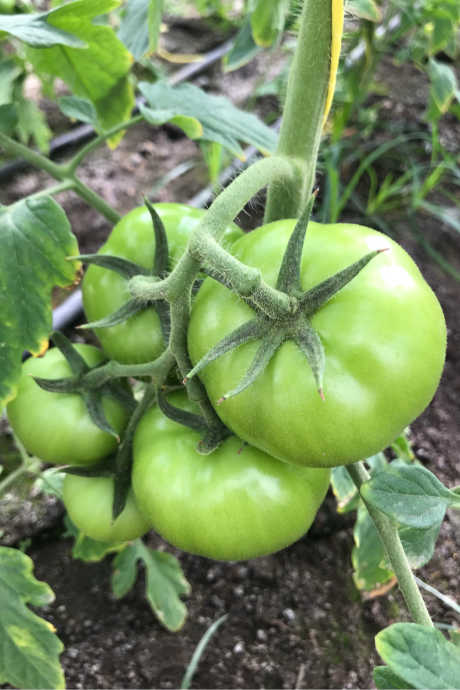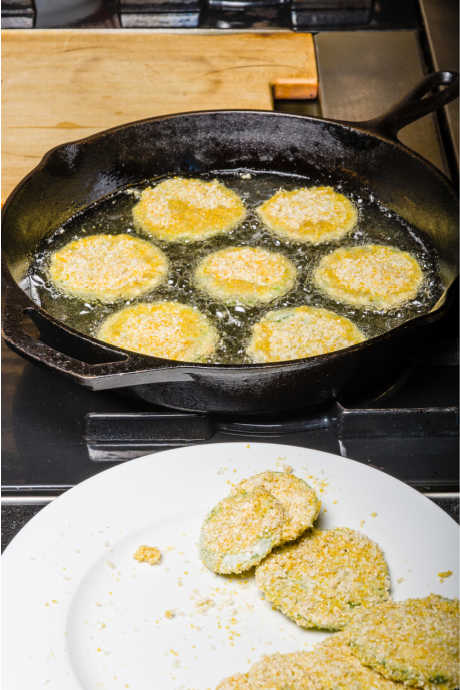Tart and Tasty Fried Green Tomatoes
Posted by Julie on Aug 19th 2020
We know you’re not ready to think about fall, but it’s coming nonetheless. Those bountiful crops of juicy red homegrown tomatoes will come to an end. Instead of leaving unripened tomatoes to die on their vines, try your hand at fried green tomatoes. We’ve got the scoop on these tasty slices, including a twist that might surprise you as much as it surprised us.
Ripe Green or Unripe Red?
The first point we want to clarify is what sort of tomatoes you need to make fried green tomatoes. While most tomatoes ripen to a deep red, some heirloom varieties such as Green Zebras or Green Moldavians don’t change color. They taste like a red tomato, but the skin and flesh remain green.

On the other hand, unripe red tomatoes are also green, but they don’t feel or taste like a ripe green tomato. Instead, unripe red tomatoes are hard and sour. They aren’t good for eating raw, but they are ideal for breading and frying.
Choose Your Timing
Slicing, breading, and frying can be a strategy for using up the last of your not-yet-ripe tomatoes before the first frost. But you don’t have to wait that long for fried green tomatoes if you want to try them sooner. Go ahead and pick a few of those unripe tomatoes right now! Or keep an eye out for unripe tomatoes that have gotten knocked off the vine, and scoop them up before they spend too much time on the ground.
How to Make Fried Green Tomatoes
It’s so easy to make fried green tomatoes that you almost don’t need a recipe. Dip the tart slices in seasoned flour, then egg, and then bread crumbs, before pan-frying them in a cast iron skillet. But there are a few variations out there, so we decided to share what we found. Pick the one that sounds most appealing to you, or try them all to see which one turns out best.

Variation #1: Food & Wine
This recipe calls for stirring salt and pepper into the flour, whisking the eggs to combine the whites and yolks, and mixing bread crumbs with Parmesan cheese for the breading. Note the omission of milk or buttermilk from the egg mixture, and the use of Parmesan in place of cornmeal. You may want to tweak your ingredients accordingly. Go ahead and use olive oil for pan-frying, but keep the heat at medium-high. Finally, we love the suggestion to sprinkle the finished slices with Old Bay for extra flavor.
Variation #2: The Spruce Eats
We like how this recipe offers several suggested variations, which might keep you coming back to it for future batches. The basic instructions include mixing milk into the beaten egg, along with combining cornmeal and bread crumbs for the breading. The Spruce Eats also proposes seasoning the breading with a Cajun spice blend or cayenne pepper. We think Old Bay would work here too. They also include the smart reminder not to fry too many slices at once, so the oil stays hot and your tomatoes crisp up nicely. Plus, check out the links to dipping sauces, like remoulade and spicy mayonnaise.

Variation #3: Southern Living
Finally, we’d be remiss if we didn’t include this recipe from Southern Living. It’s simple and straightforward, starting with flour seasoned with salt and pepper, egg whisked with buttermilk, and cornmeal for the breading. We’re also on board with their ideas for serving fried green tomatoes, such as on a BLT or burger, or in place of ripe red tomatoes in a caprese salad.
The Twist: Where Fried Green Tomatoes Began
Fried green tomatoes originated in the South, right? That’s what everyone assumes, but we’re all mistaken. These tasty, tart slices were first found in church cookbooks published in Ohio in the late 19th century. Even more curious, fried green tomato recipes were also found in Jewish cookbooks from the early 20th century, published in New York.
No doubt we associate fried green tomatoes with the South thanks to Fannie Flagg’s book and the movie based on it. But if you’d like to try an authentic Northern recipe for fried green tomatoes, check out
this one published on Bon Appetit that comes from a 1902 Philadelphia cookbook. We bet you’ll be surprised by how it differs from the ones we make now, over 100 years later.
 Free shipping over $49
Free shipping over $49










